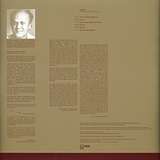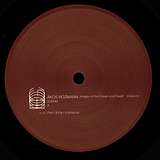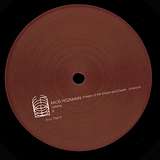Ákos Rózmann: Images of the Dream and Death
Luxury presented Electro-Acoustic album
- A1 Part I & Part II (Attacca)
- B1 Part II
- C1 Part II (Conclusion) & Part III
- D1 Part III
- E1 Part III
- F1 Part III (Conclusion)
’The first version of Bilder inför Drömmen och Döden was realized in the studios of the Royal College of Music, Stockholm and EMS (Elektronmusikstudion) 1974-77 and was premiered on 9 March 1978 at Cirkus in Stockholm. The second version was made for the first LP release in 1986 and the third version for a CD release in 1991. This edition presents Ákos Rózmann’s fourth and final version from 2001, unabridged. In 2001 he received an invitation from a festival in Essen, Germany, for a nocturnal performance of the piece in a church. He was himself in charge at the mixer at the premiere, but was very unhappy with the result. Rózmann refused to be present at his own concerts as a rule, and would rely on me to take care of the performance.
During the 1990s, the collaboration between Ákos Rózmann and myself developed to such a degree that I was trusted with the sound diffusion of his music during performances. Whenever possible, we would work together on the loudspeaker system prior to the performance of a piece. I went to the performance in Essen in his stead and before I left, we went through the piece in detail in the studio.
As with all Rózmann’s church concerts, bell-ringing is statutory before the start. The object is to “clean the air” in a spiritual sense before the performance. The piece would start straight after the last chime. The interval between part II and part III should be sufficiently long to provide the audience some respite from listening. The lighting should be soft and sacral throughout the piece. About three minutes from the end there is a shrill part where the instruction states that the audience should be blinded by a strong, white, frontal light. Where possible, the intensity of light should grow with the sound-volume. Both sound and light should become rather painful. The light should also be very suddenly cut off at the abrupt end. — Mats Lindström, Stockholm 2013 (translation: Isabel Thomson)’



